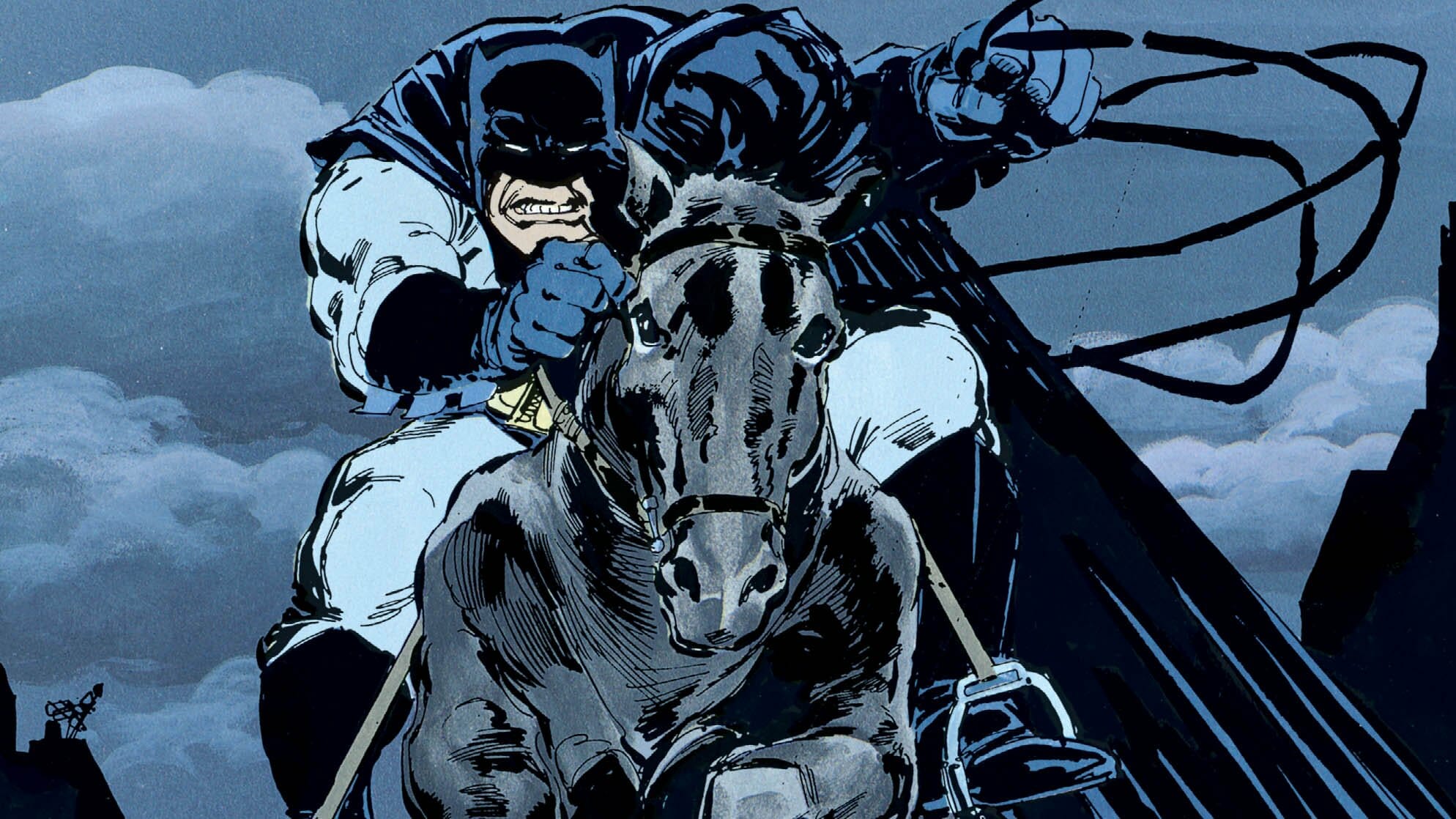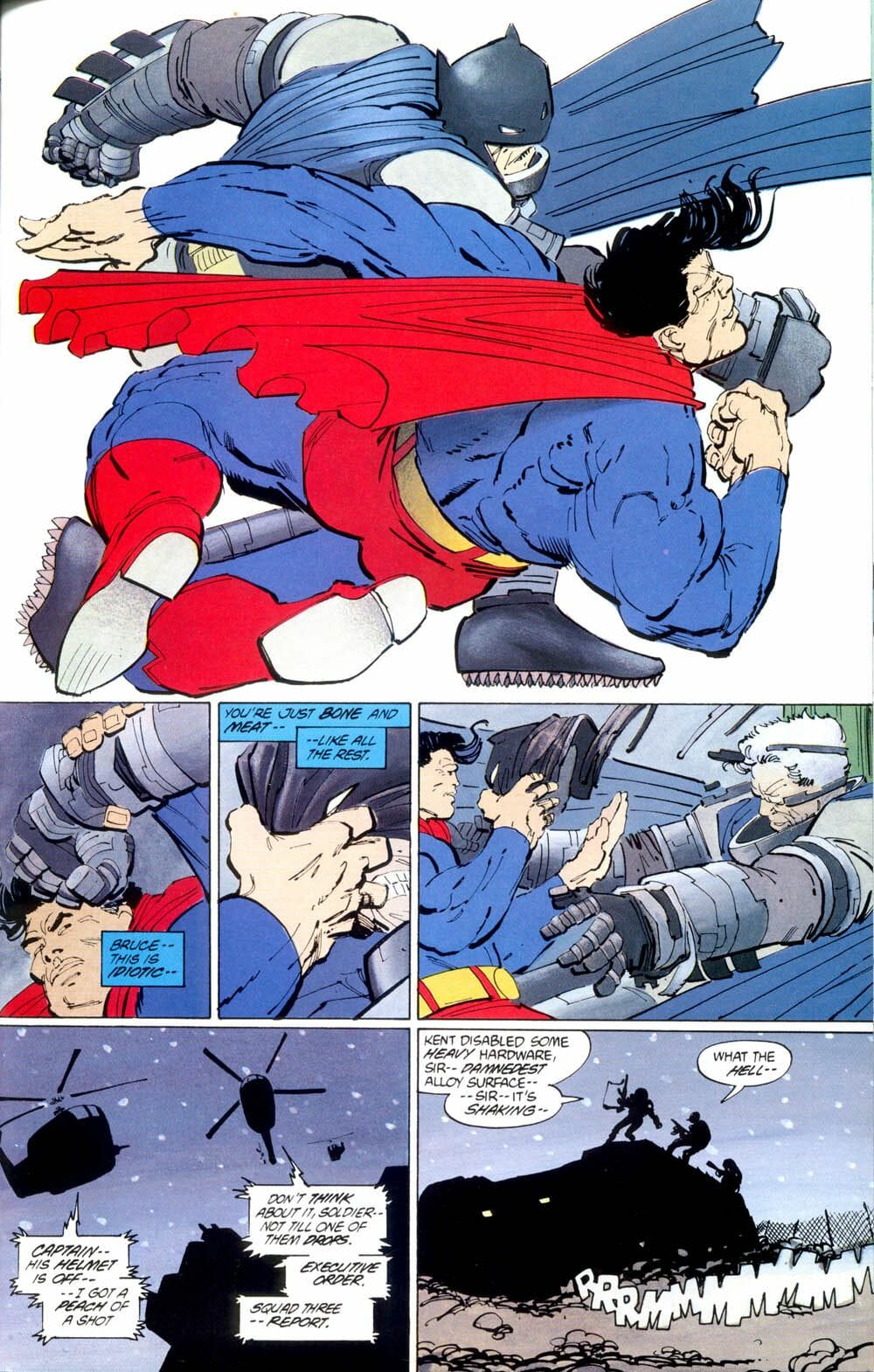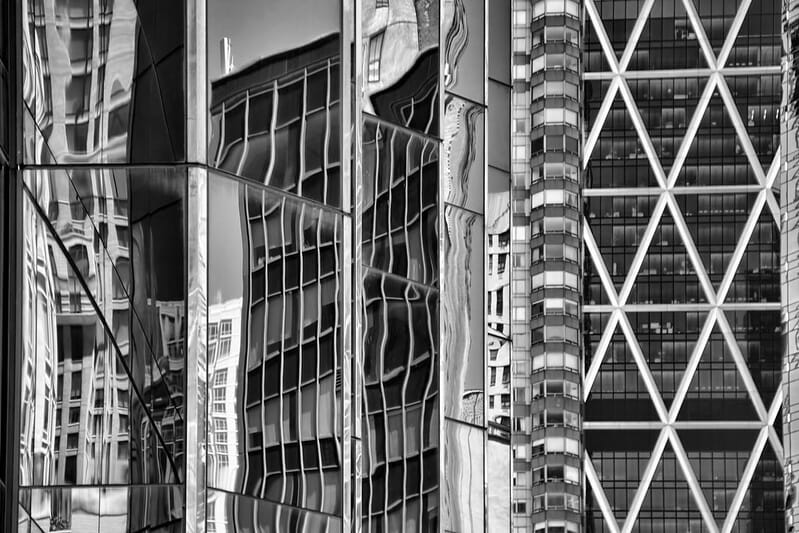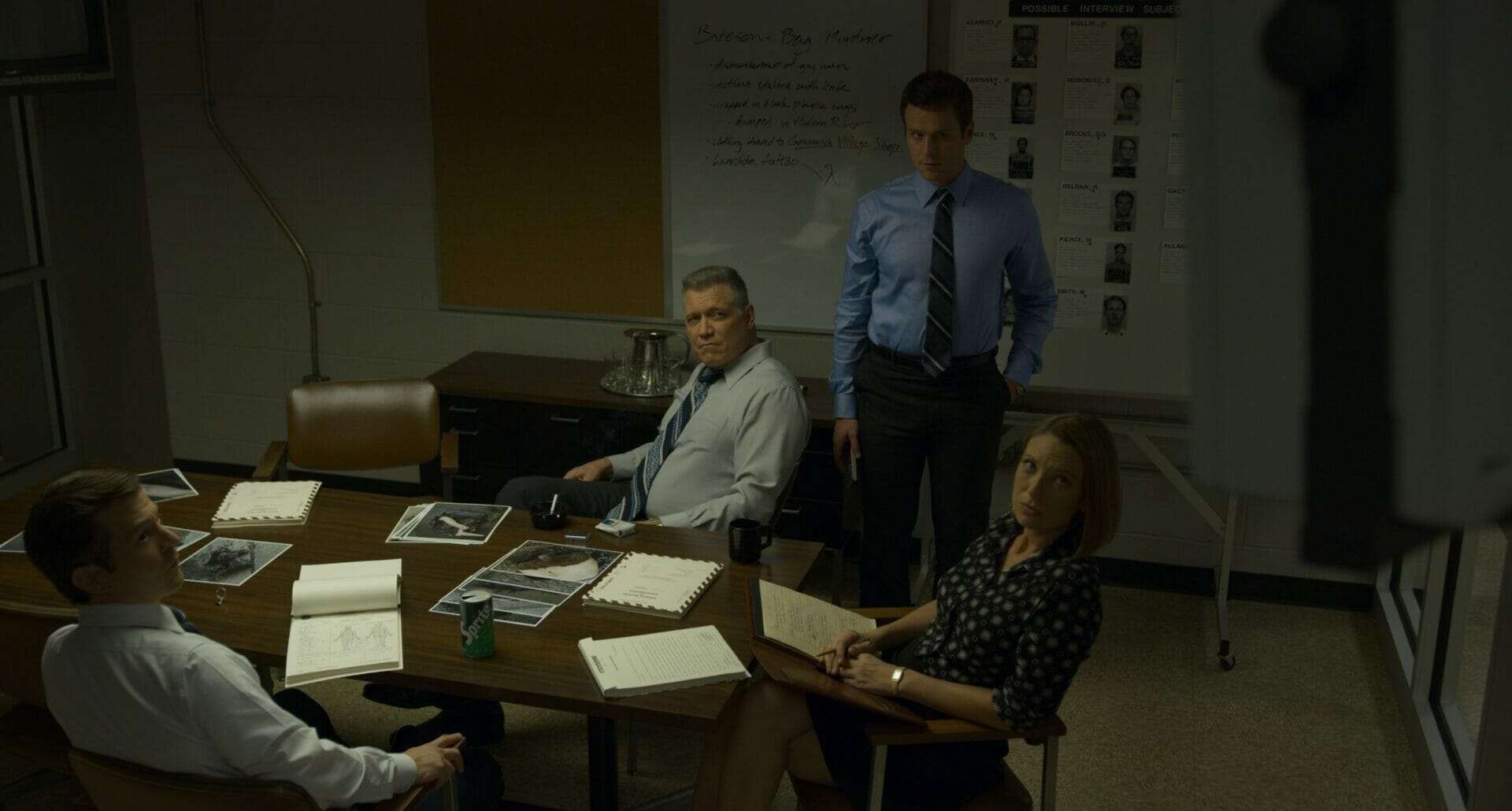
The Dark Knight Returns by Frank Miller | What four different nemeses can tell
Author
Year
This should be agony. I should be a mass of aching muscle, broke, spent, unable to move. And yet, the rain on my chest is a baptism. I’m born again
Saying these very words to himself, a fifty year-old Bruce Wayne decides, once again, to don the Batman cape. The Dark Knight Returns by Frank Miller, published in 1986, marks a turning point in the history of comics. Along with Alan Moore’s Watchmen, this comic legitimized a new language which had been spreading and consolidating over the previous years. Apart from the deconstruction of the superhero, works like these brought more to the forefront the presence of tormented characters, and subject matter geared to grown-up readers. For many, it’s still considered as one of the most relevant and influential comics ever, and serves as a guideline for the way in which the comic made its transition onto the big screen, particularly in regard to Christopher Nolan’s trilogy.
In each episode of The Dark Knight Returns, Frank Miller makes Batman confront a different nemesis: Two-Faces, the Mutant Leader, Joker and Superman. Each confrontation sheds light on all the various characteristics and inner conflicts of the Caped Crusader.
The Dark Knight Returns: the Gotham City of Frank Miller
The story is set in an alternative universe where the superheroes are all retired and only Superman still stands as America’s guardian angel: Gotham City is on the verge of a civil war, while the Cold War itself risks escalating. The story is told as if the television was constantly switched on, and TV programmes take up a lot of space in the story, commenting on events in the plot, in the same way as which three news channels are used by Todd McFarlane in his Spawn. The author presents them as a background noise, where everyone is unable to properly interpret what is going on. Bruce, on the other side, may be retired, but sees what is happening. He sees that his city and his people need him and he can’t help but let Batman return.
I see a reflection, Harvey…
Two recent developments in particular strike Bruce Wayne. The first is the appearance of the Mutant Gang, a group of young people ravaging Gotham City. The other is the alleged recovery of one of his worst enemies, the lawyer and criminal Harvey Dent/Two-Face. Miller builds up parallels between the two characters. Harvey’s mental illness has apparently been healed and his face, with its burnt skin, has been cured. Bruce Wayne is no longer Batman, and has made the decision to be accepted as just another normal citizen.
These characters, however, can’t stop being who they fundamentally are. When Bruce puts on the Batman cape anew, he responds to a call for justice, and to an inner impetus. Like Harvey’s illness, Bruce’s traumas – his parents’ murder, the bond with bats and darkness – and the way he has found to handle them can’t be erased. When Batman chases down Two-Face, who is committing yet another crime, and catches him, he pities him and himself. He sees a reflection of his own obsession.

This is an operating table and I am the surgeon
In the second part of The Dark Knight Returns, Frank Miller enacts a generational clash. The Mutant Gang is trying to take over the city and its leader openly challenges Batman. They are young and strong, but also violent and arrogant. They are a metaphor for a generation at loss, which can express itself only by aggressive self-assertion. This chapter puts aside Batman’s inner dilemma and shows him as the hero saving the day. He acts as an alternative to uncontrolled violence and a role model to follow. As Miller said, superheroes draw the best out of people. Even if this Batman is brutal like never before, he always fights for what he believes is just and shows there is always hope.
This is why people trust him and he manages to go on even after losing a fight. When he knocks out the Mutant Leader, the gang starts to look up to Batman, instead of considering him a threat. Moreover, the author uses this fight and the general turmoil permeating the story also to criticize politicians, unable to handle the rising crime rate in New York City by that time. Batman stands as a symbol which can show a different future to a younger generation.
How many more will it take it before I do it?

The third part builds up to the final confrontation between Batman and Superman but focuses on another old nemesis. It’s The Joker, free thanks to the same fraud of a doctor who had sworn that Two-Face had recovered fully. The conflict between the two is the classic one. Miller tricks the reader into believing he could break his golden rule and kill Joker. He is old, tired of fighting against the same problems over and over, not strong enough anymore to keep up to all of them. However, Batman can bend the rules to do justice, this time more violently than ever, but he doesn’t get to decide what is right or wrong. Even this time, he cannot take a life, he cannot kill somebody.
I want you to remember the one man who beat you
Of all four, Superman is not a nemesis for Batman. But they have different perspectives on what it means to be a superhero, and Miller pushes this disagreement to its limit. Superman wants to protect mankind, leaving it free to make its own choices. This is why he agreed with the idea of dismissing superheroes. Batman would like to turn society into the best version of itself, guiding people instead of just helping them. When a complete blackout strikes Gotham and criminals start ravaging the streets, he even assumes an authoritarian attitude to contain the crisis. Batman knows he can act like this without becoming a tyrant.
The American President can’t let go this unnoticed and asks Superman to contain Batman. It is a long-awaited showdown. Bruce enjoys being the only man who will ever beat up Superman, but also regrets what they could have done together. Instead of stepping aside, superheroes could have changed mankind. The fight is a draw and Bruce fakes his death to get off the radar. His real plan is to build up a better future. This is why, after a fake funeral, he takes with him Carrie, a newborn Robin, and the young people from the Mutant Gang who decided to follow him. They will make up a team which will try to make the world a better place.

Miller Created a Bat-Universe with The Dark Knight Returns
With The Dark Knight Returns, Frank Miller created an alternative Bat-verse which he has expanded during the years. The Dark Knight Strikes Again came out in 2001. It addresses both the power of mass media and the aftermath of 9/11. In 2015, together with Brian Azzarello, he published The Dark Knight III: Master Race, dealing again with the role of superheroes. In 2019 he published The Dark Knight Returns: The Golden Child, which may be an introduction to part four of the saga. DC Comics also produced a two-parts animated adaptation released in 2012-2013.
Tag
Buy a ☕ for Hypercritic









